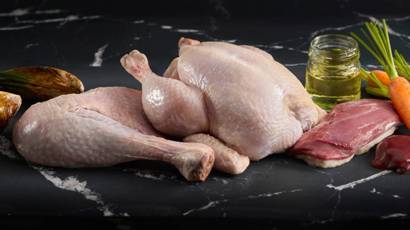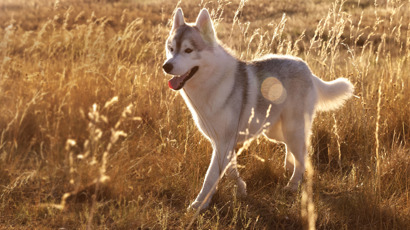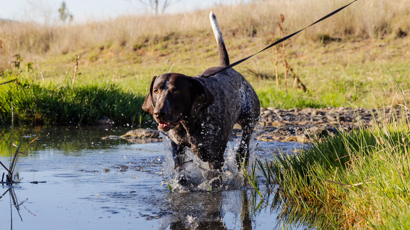How much should I feed my dog?
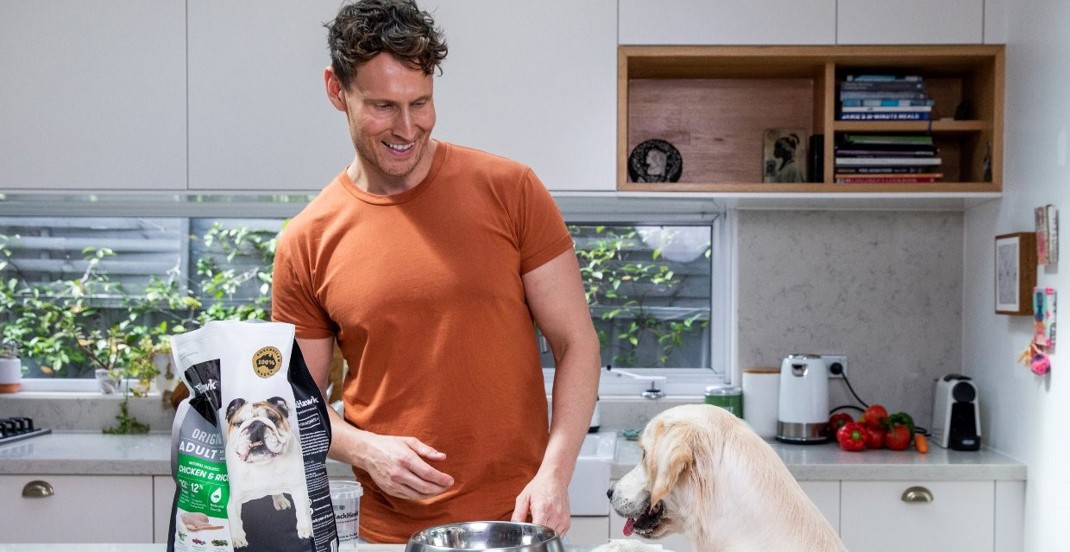
While we (and our dogs, by means of showing us their taste preferences) can spend a lot of time choosing what to feed, the question of how much to feed is a consideration usually made only when we have brought the food home.
Below are some general tips to using Feeding Guides, and then some specific considerations for the guidelines seen on Black Hawk products.
Tips on feeding guides
Feeding guides are important!
Responsible pet care is all about realising their needs (and a bit of their wants, too!). The need to deliver adequate energy and essential nutrients to help them survive and thrive is what following feeding guides is all about. Measuring meals really helps them live their best life.
Feeding guides are a starting point.
While ‘how much to feed’ is an essential consideration, these tables are the first step toward getting things absolutely right. Because they’re written for the entire population of pets eating that particular dog food or puppy food, it may take some tweaking to get things right, particularly when change occurs for your pet (ie, if they walk less over winter or start looking a little ‘podgy’).
Your pet’s needs will change.
The factors that change how much food they need include:
- Size / body weight and condition
- Activity levels
- Age (think puppies and kittens versus senior pets)
- Individual genetics, breed and metabolism
- Sterilisation/neutering and reproductive status (eg, if they’re pregnant)
We all know that these things change throughout their lives, so their feeding requirements will change. Feel confident in adapting their meal sizes according to whether they need more or less energy, and seek advice if needed.
The figures these tables give area a daily allowance.
It’s an important point, sometimes not highlighted, but feeding guides give the total amount of food to feed over the entire day, rather than per meal. Feel free to divide the recommendation over multiple meals to suit your pet’s preference (and your routine!).
Always ensure fresh water is available.
Just like the rest of us mammals, at least 70% of your pet’s body is made up of water and it’s essential to most life-sustaining bodily processes. Water is arguably the most important nutrient, so ensure they have easy access to a clean, plentiful supply of it.
Pet food companies are here to help.
There are a lot of tips here, and here’s an article to help you understand the Black Hawk feeding guides, specifically.
Vets and other trusted pet care professionals will help you find the right daily food allocation, we at Black Hawk have online calculators and a Customer Services team to help create the perfect feeding guide for your pets. So get in contact!
Black Hawk Feeding Guides
Here’s a quick ‘cheat-sheet’ to ensure your pet gets what they need:
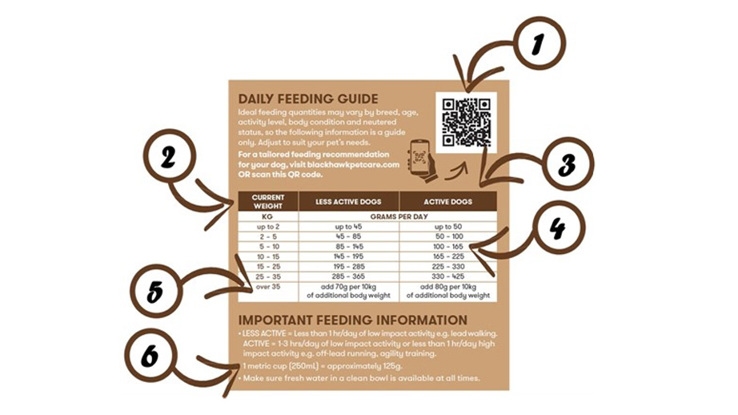
This QR code will take you to our Daily Feeding Calculator. This is only available for our adult dog foods at this stage but puppy and cat will be available soon.
Recommendations are given according to your pet's current weight (rather than their ‘ideal’, ‘expected’ or ‘mature’ … or any other weight). If you feed according to the figures given in the table, you’ll maintain their current weight. If they are too heavy or light, then you should adapt meals accordingly.
How active they are effects how much energy and therefore food they need. We give you options for less active (less than 1hr of daily activity) or active pets (1-3hrs), so you can get ever-closer to their perfect meal sizes.
Note that a range of grams per day are given. This corresponds to the current weight ranges given in the left-hand-column. In the example above an active, 5-10kg dog should be fed 100-165g per day, which means that a 5kg dog should receive 100g, and a 10kg dog should receive 165g.
If your pet is above the upper limit of the feeding guide (in this case example above, 35kg), we recommend you add an extra measure of food for every extra 10kg. In the above table, the recommendation is 70g or 80g, depending on their activity level. Remember that in some circumstances there are ‘Large Breed’ products which will suit larger dogs even more. Check the Black Hawk Dog food range here.
Measuring cups are a good idea to keep your hands clean. Use the same cup which has had your pet’s allowance weighed and poured into it. This ‘calibrates’ your first feed. While handy, measuring cups are where many errors in feeding volumes are made. Have meal volumes clearly marked on them, or cut the top off a plastic measuring cup, meaning filling it to the brim gives them the amount of kibble they need.
Ultimately and just as it is with us human beings, feeding too much or too little can lead to serious consequences to health and wellbeing: weight gain and obesity are on one side of this equation, and energy or essential nutrient deficiencies are on the other. For this reason, it’s important to use Feeding Guidelines, and to seek advice if you need more guidance or information.
The tables you see on the Black Hawk packaging aren’t an exact science, so take comfort in knowing that they’re a starting point. Ultimately you and your pet are the authorities in knowing what’s perfect for them, and adapting to changes in weight, exercise levels and age for example is important. There are a few more tips in this article should you want to know more.

